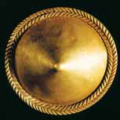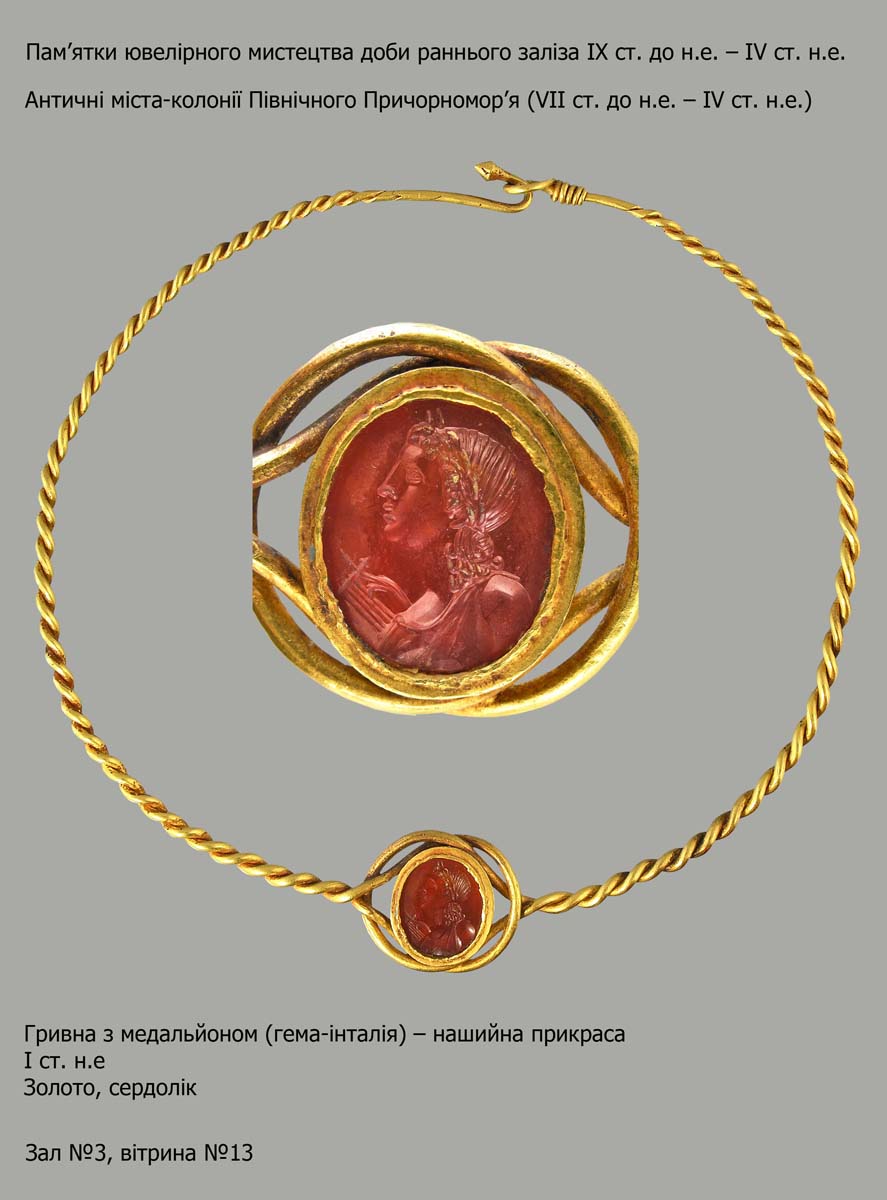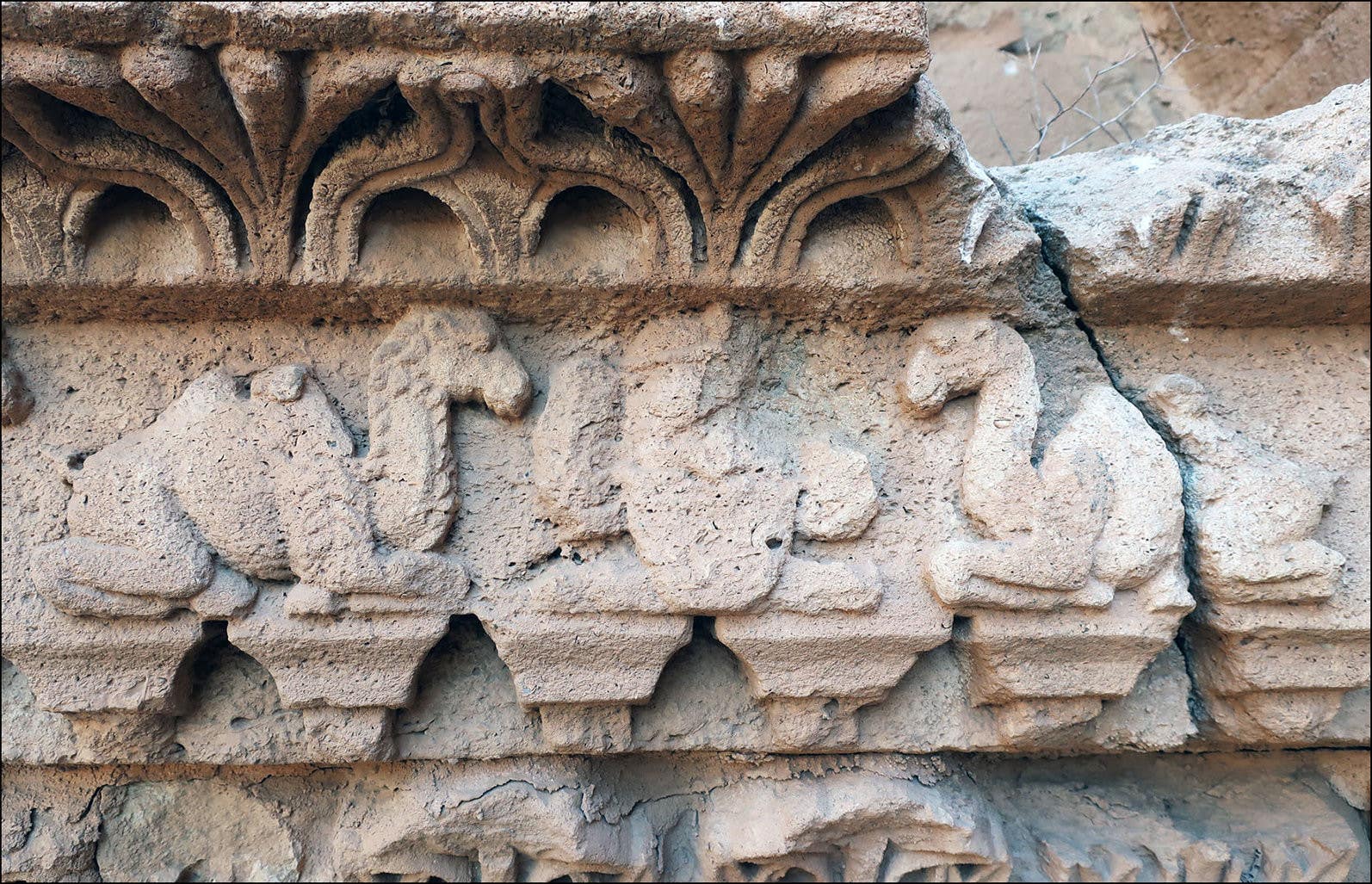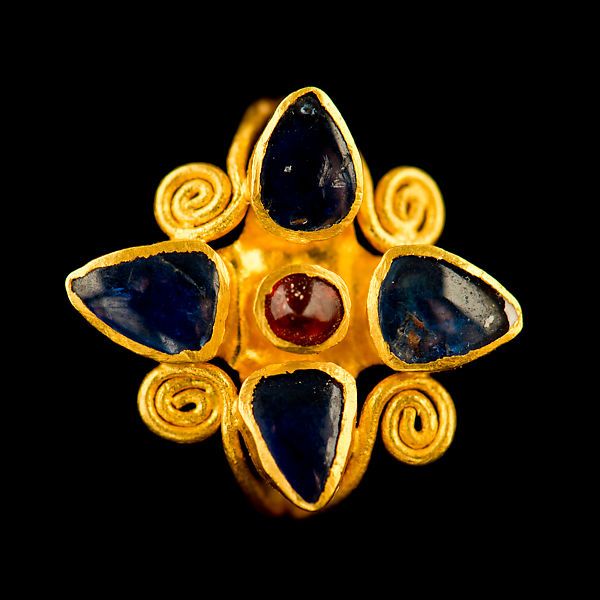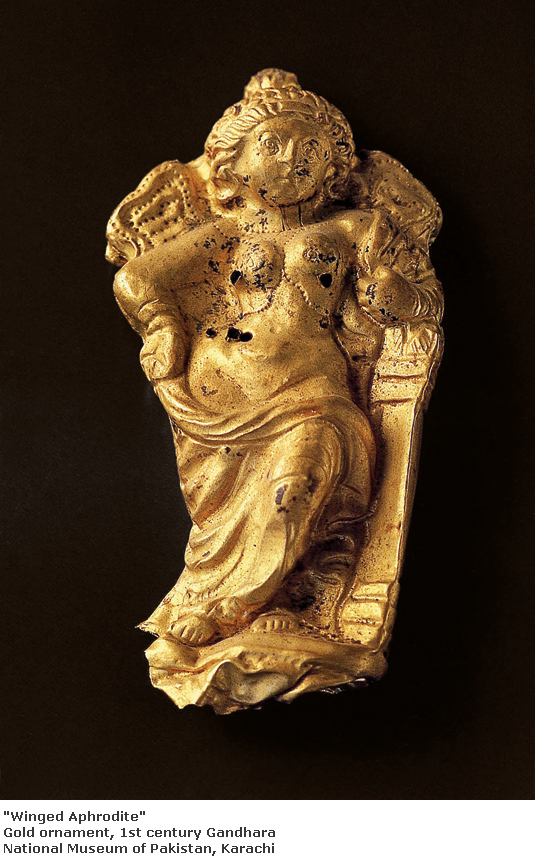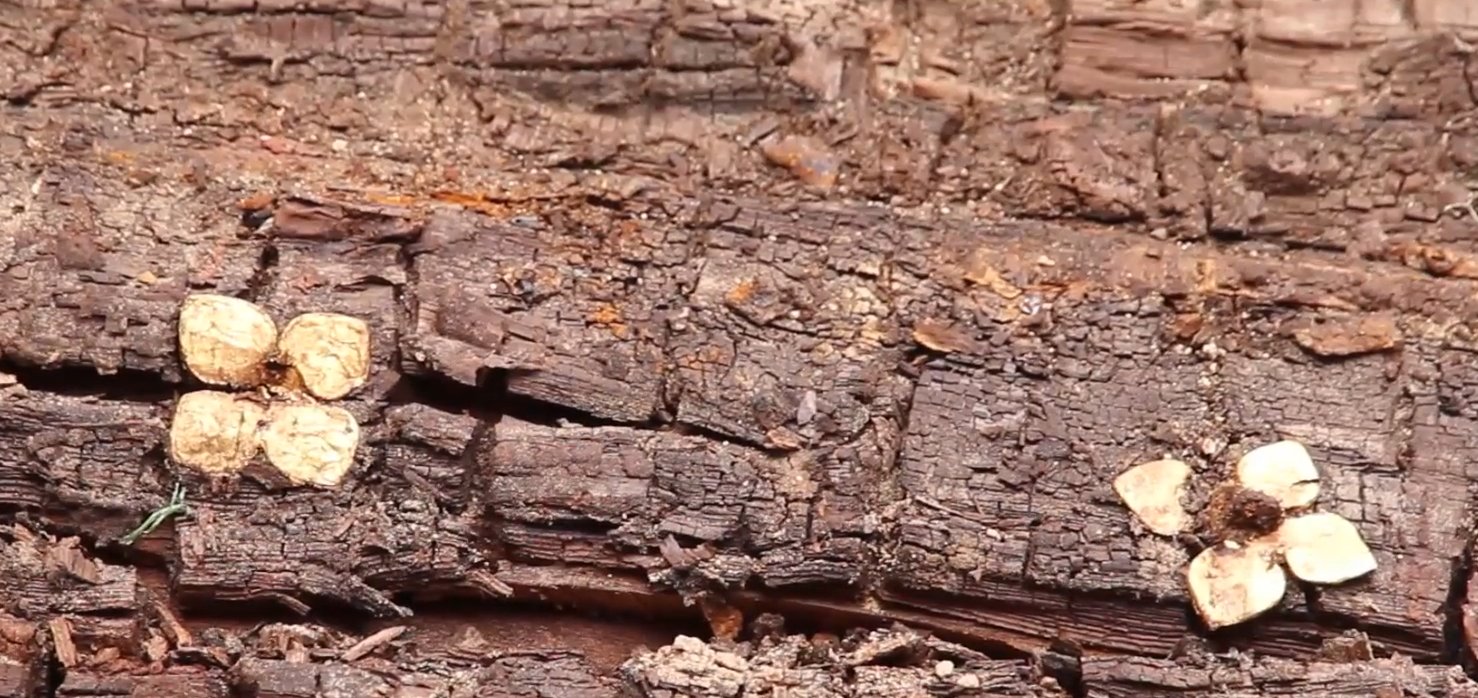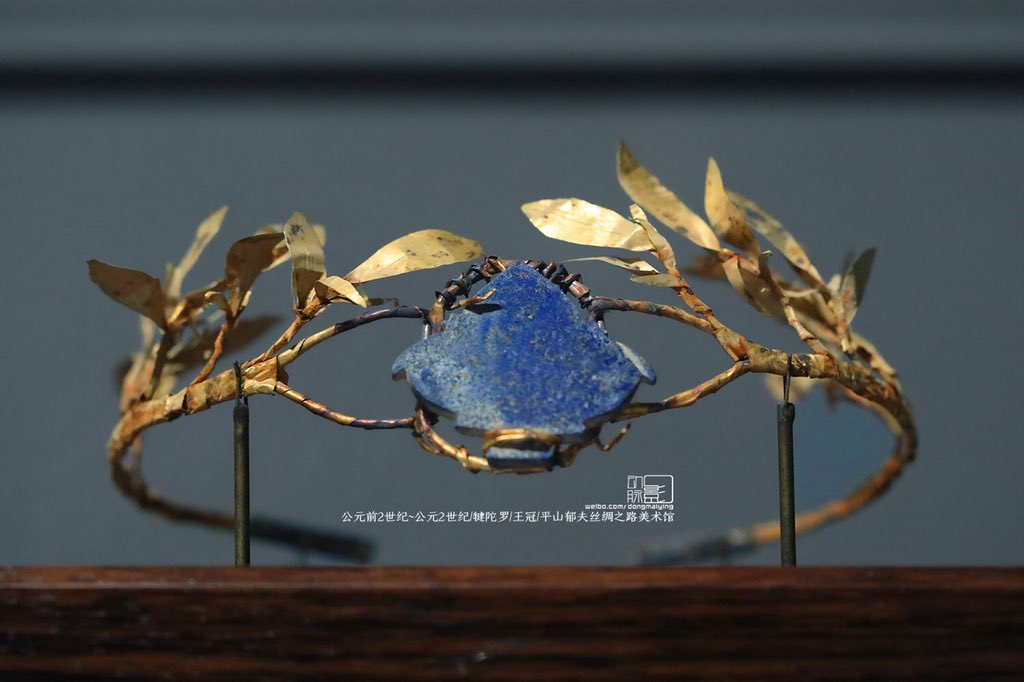
Two silver necklaces (pectorals according to Dubova) were found in men’s burials. One depicts two eagles, second one – pair of bulls.



©N. A. Dubova

©N. A. Dubova
Bactrian necklaces made of – or inlaid with – “dark stone” (fig. 13a‑c), the Oxus Civilization dark stone artefacts:
– lapis associated with carnelian
– turquoise associated with carnelian
– steatite, carnelian, lapis associated with a “dark stone” used as medallion
Iran and Central Asia
The Grand’Route of Khorasan (Great Khorasan Road) during the third millennium BC and the “dark stone” artefacts; Henri-Paul Francfort
https://books.openedition.org/momeditions/8146
All three necklaces mentioned by Henri-Paul Francfort were sold on auction by Christie in 2013 as a property of Ligabue family. It is on sale by the Artemis Gallery [last info unsold 10/9/2022].
Provenance: “ex-private Johnson collection, Houston, Texas, USA, acquired in 2013; ex-Christie’s, New York “Ancient Jewelry” auction (sale 2771, December 13, 2013, lot 201); ex-Nefer Galerie, Zurich, Switzerland, late 1970s to early 1980s”






Chlorite pendants inlaid with lapis lazuli, calcite, carnelian, and copper; banded agate [spacers], triangular shell terminals.
37.1 cm long; 3rd Millenium BCE

“Strung with lapis lazuli beads of various forms interspersed with lapis lazuli spacers, graduated in size, centered by two chlorite compartmental rosette beads, inlaid with lapis lazuli and carnelian, a large lapis lazuli ovoid bead in between with a gold overlaid copper projection on each end”
21.9 cm long

“Strung with turquoise lozenge-shaped beads interspersed with turquoise spacers, graduated in size, centered by two chlorite compartmental rosette beads inlaid with turquoise, lapis lazuli and shell, a turquoise lozenge-shaped bead and spacers in between”
31.8 cm long
Silver pin with an image of seated female figur was once a seal. Woman is wearing a typically ‘Bactrian’ kaunakes-type garment similar to those worn by the two female figures on the Elamite silver vessel from Iran 2200 BCE. [N. A. Dubova, Treasures; D. Potts]
[read more]

Photo after Nadezhda A. Dubova, Treasures of Ancient Margiana

(after Sarianidi, Margiana and Protozoroastrism, Fig. 34). After Daniel Potts
Silver vessel with Bactrian camels from Gonur Depe, tomb 3220
Vessel with camels was discovered amongst a cache of objects in ‘royal’ tomb 3220 at Gonur Depe. Its precise dimensions have not been published, “a photo showing V. I. Sarianidi holding the vessel in 2004 [after discovering] suggests it is much larger than the Persepolis vessel, possibly on the order of 30 or 35 cm tall”. [D. Potts, pp. 172-173]

after Nadezhda A. Dubova [presentation]


The remains and representations of the Camelus bactrianus in Central Asia between the 3rd and 1st millennium BCE
“Are they marks of personal, family, clan, rebus property? We don’t know, but apart from the saiga antelope, the camel is the only animal to appear like this. Could we imagine, for example, the coat of arms of an aristocratic tribe or clan, that of the “untel‑* uštra ” for example?”

Source: Daniel Potts
Gold figure with turquoise inlay from a tomb in Gonur Depe.
“One side of the saiga [antelope] figurine which was found in 2012 spring in the grave where there were sheep buried was made of gold, the second one – of silver. Additionally it is decorated with turquoise inlays.” [Dubova “Treasures”]



royal tombs of 3200 contains nearly 1,000 of gold, lapis lazuli and carnelian beads.
Photo after Nadezhda A. Dubova, Treasures of Ancient Margiana




Photo after Nadezhda A. Dubova, Treasures of Ancient Margiana


© Herlinde Koelbl [source]


- Treasures of Ancient Margiana. Nadezhda A Dubova https://www.academia.edu
- Gonur oasis: Discoveries of the last decades / Гонурский оазис: находки последних десятилетий.
Nadezhda A. Dubova https://www.academia.edu - The_ancient_people_of_ Gonur-Depe, Aleksey Nechvaloda https://www.academia.edu
- Археологические работы на Гонур-Депе – новый аспект палеоантропологии Туркменистана / Archaeological works at Gonur Depe – new view on the physical anthropology of Middle Asia, Nadezhda A. Dubova https://www.academia.edu
- V. Sarianidi, Necropolis of Gonur, 2007
- New polychrome painting from Gonur Depe, Turkmenistan; Nadezhda A. Dubova, Aleksey V. Fribus, Robert Sataev, Liliya Sataeva https://www.researchgate.net
- THE IRANIAN PLATEAU DURING THE BRONZE AGE Jan-Waalke Meyer, Emmanuelle Vila, Marjan Mashkour, Michèle Casanova, Régis Vallet
- Puzur-Inšušinak and the Oxus Civilization (BMAC): Reflections on Šimaški and the geo-political landscape of Iran and Central Asia in the Ur III period; Daniel Potts https://doi.org/10.1515/ZA.2008.010
- François Desset: On The Decipherment Of Linear Elamite Writing [2021] https://www.thepostil.com/author/francois-desset
- Henri‑Paul Francfort, Les vestiges et les représentations du Camelus bactrianus en Asie centrale entre le IIIe et le Ier millénaire av. J.‑C. [The remains and representations of the Camelus bactrianus in Central Asia between the 3rd and 1st millennium BCE] https://books.openedition.org
- Henri-Paul Francfort, Iran and Central Asia. The Grand’Route of Khorasan (Great Khorasan Road) during the third millennium BC and the “dark stone” artefacts https://books.openedition.org/momeditions/8146
- A Formerly Buried Trove of 4,000-Year-Old Artifacts Is Leaving Turkmenistan for the First Time, Kate Brown, May 7, 2018 https://news.artnet.com/art-world/turkmenistan-margiana-1275443
- Margiana – Current research on a Bronze Age advanced culture in today’s Turkmenistan https://www.archaeologie-online.de




